Qumulo monitoring
In case of usage of Virtual Appliance- Use local account lpar2rrd for hosting of STOR2RRD on the virtual appliance
- Use /home/stor2rrd/stor2rrd as the product home
API is accessible over HTTPS port 8000 on Static as well as Floating IP addresses.
Storage connectivity
-
Allow access from the STOR2RRD host to the Qumulo storage on port 8000
$ perl /home/stor2rrd/stor2rrd/bin/conntest.pl 192.168.1.1 8000 Connection to "192.168.1.1" on port "8000" is ok
-
Create user for STOR2RRD
Log in to Qumulo management GUI
Go to Cluster -> Local Users & Groups
Note: since Qumulo 3.0.5 and higher you have to manually assign Observers role to STOR2RRD user
Create new user in group Users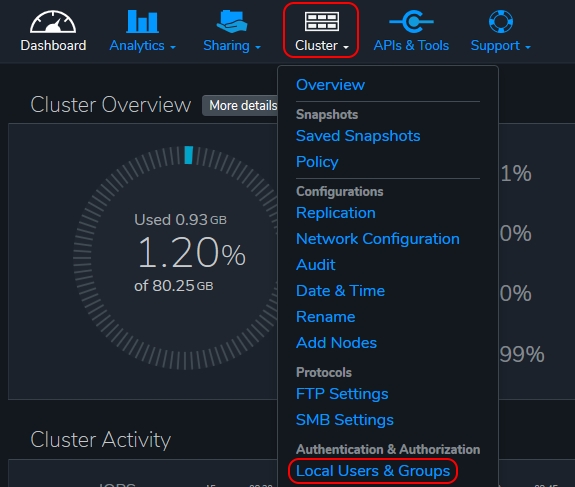
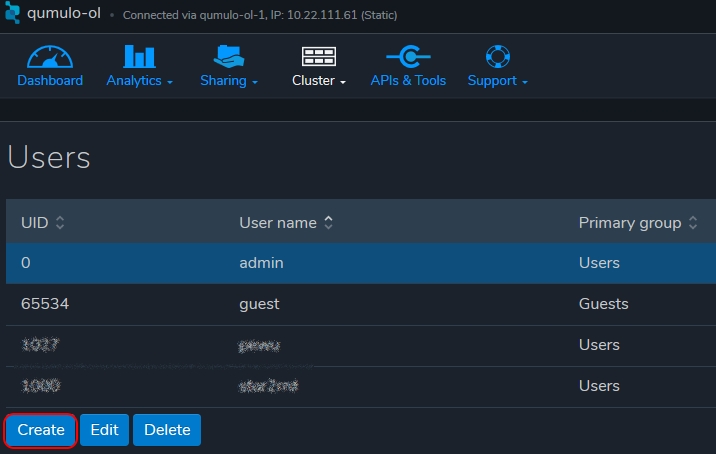
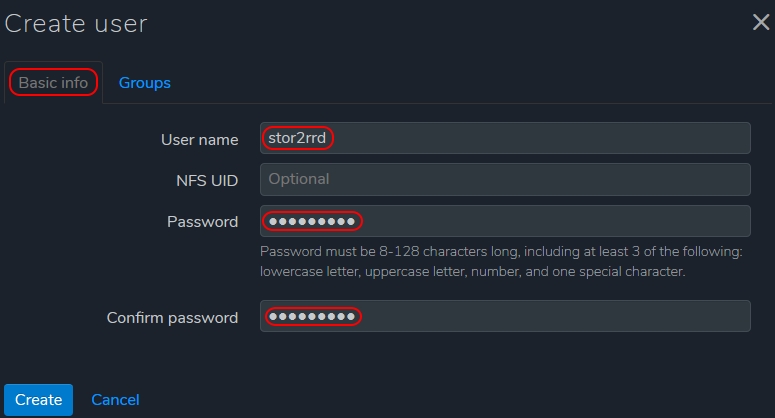
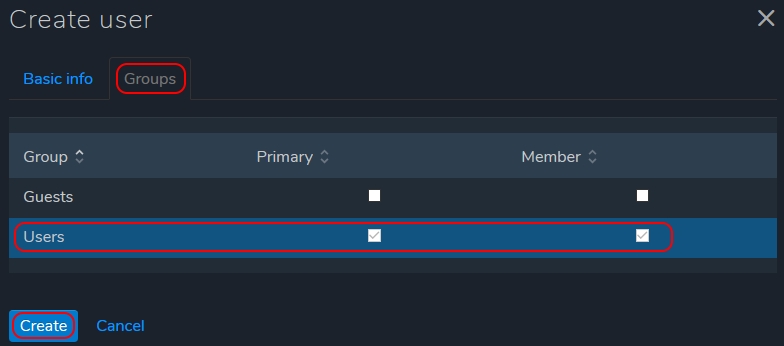
STOR2RRD storage configuration
-
Add storage into configuration from the UI:
Settings icon ➡ Storage ➡ New ➡ Vendor:device ➡ Qumulo
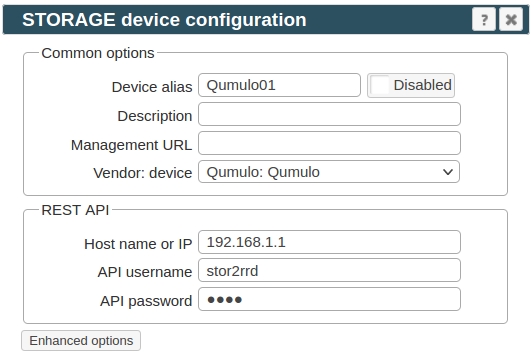
-
Assure you have enough of disk space on the filesystem where is STOR2RRD installed
Roughly you might count 2 - 30 GB per a storage (it depends on number of volumes, 30GB for 5000 volumes)$ df -g /home # AIX $ df -h /home # Linux
- Schedule to run storage agent from stor2rrd crontab (lpar2rrd on Virtual Appliance, it might already exist there)
Add if it does not exist as above
$ crontab -l | grep load_qumuloperf.sh $
Assure there is already an entry with the UI creation running once an hour in crontab$ crontab -e # Qumulo 0,5,10,15,20,25,30,35,40,45,50,55 * * * * /home/stor2rrd/stor2rrd/load_qumuloperf.sh > /home/stor2rrd/stor2rrd/load_qumuloperf.out 2>&1
$ crontab -e # STOR2RRD UI (just ONE entry of load.sh must be there) 5 * * * * /home/stor2rrd/stor2rrd/load.sh > /home/stor2rrd/stor2rrd/load.out 2>&1
-
Let run the storage agent for 15 - 20 minutes to get data, then:
$ cd /home/stor2rrd/stor2rrd $ ./load.sh
- Go to the web UI: http://<your web server>/stor2rrd/
Use Ctrl-F5 to refresh the web browser cache.